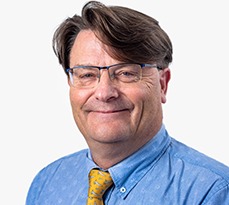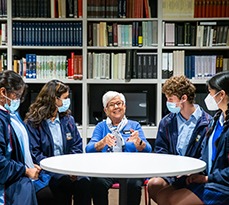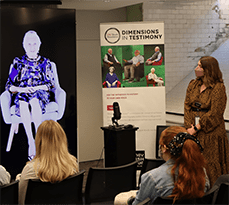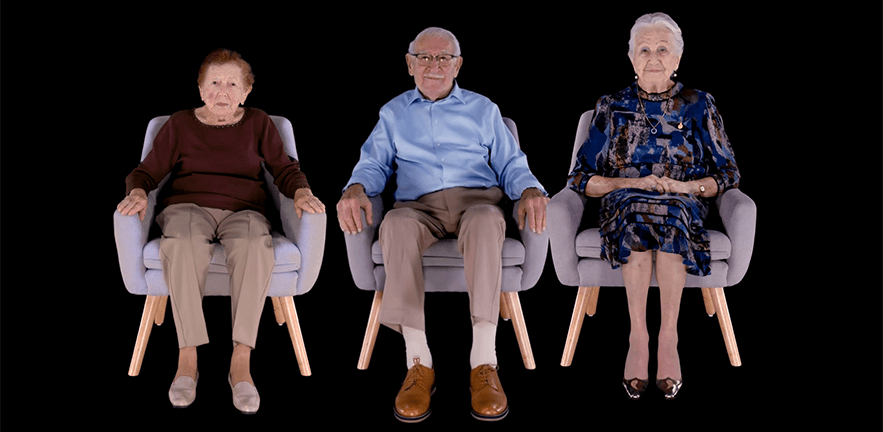Catching up with Kevin Sumption (Executive Education: ALP 2013) as he moves from the Australian National Maritime Museum to the Sydney Jewish Museum.
We caught up with Kevin Sumption (an alumnus of the 2013 Advanced Leadership Programme, delivered by Cambridge Judge Business School Executive Education) shortly after he took over the leadership of the Sydney Jewish Museum, Australia’s foremost Holocaust museum. Kevin shared with us his thoughts about the importance of preserving survivor testimonies and the role that technology plays in this.
Tell us briefly about the Sydney Jewish Museum and your new role

After 10 successful years as the CEO of the Australian National Maritime Museum, I was honoured when approached to take on a new and challenging brief at the Sydney Jewish Museum, one which looks to the future of museums and sets about re-imagining the galleries and education programmes of a Holocaust museum.
The Sydney Jewish Museum was established in 1992 by Holocaust survivors who took over the then under-utilised Maccabean building to house their rare and precious collections, as well as to run a series of education programmes. Ours was the second Holocaust museum to be established in Australia, following the 1984 opening of the Melbourne Holocaust Museum. These 2 cities were the principal sites of settlement of more than 35,000 pre-war Jewish refugees and post-war Holocaust survivors who migrated to Australia. Both museums were established in direct response to the rise of Holocaust denial and revisionism, which was and continues to be a serious threat to the memory and lessons of survivors’ experiences.
The re-imagining of a Holocaust museum must be a huge challenge

Yes, the reimagining of the Sydney Jewish Museum is no easy task. We cannot know precisely who will visit the museum in 10, 15 or even 20 years. However, we start by carefully questioning our existing visitors to better understand their motivations, likes, dislikes and appetite for visiting museums. Importantly, we also talk to visitors who have chosen not to come to our museum. These responses enable us to begin to better understand current and hopefully future visitors’ preferences. Only with this insight can we start to think about the things we might change, as well as those we won’t. What has always astounded me is how articulate, knowledgeable, and discerning museum visitors are in Sydney. After all, we live in a city that is home to some of the world’s great museums, so our visitors have very high expectations. Also, our visitors are constantly making choices about where to spend their precious leisure time, so it is no easy task to be high on their list of must-visit museums.
Today, Holocaust museums can be found all over the world. In Australia, we currently have 2 new museums under construction and a further 2 in planning. The Sydney Jewish Museum’s mission has changed over the last 30 years. Now, as well as providing forums that survivors and their families can use to educate and recount their experiences, we are also increasingly using new immersive technologies to ensure survivor testimonies continue to be accessible and powerfully conveyed.
As the number of survivors decreases, how are you going to prevent their light from being extinguished?
Over the next 10 years, it is likely many of our precious survivors will no longer be with us. And it is the personal stories of these survivors to which many of our museum visitors and school students have been drawn. Fortunately, the children and now grandchildren of survivors are increasingly taking on the responsibility of telling survivors’ stories. However, as we look to the future, I am mindful that the Museum needs to also make use of appropriate and sensitive immersive technologies to continue to make these first-person testimonies accessible for future generations.
Immersive technology in a museum context is fascinating! How exactly is it utilised?

First introduced in 2015, interactive Holocaust survivor biographies can be found across the world, from the United Nations to the Illinois Holocaust Museum, and now also here at the Sydney Jewish Museum. Much of this technology has been developed by the Shoah Foundation in collaboration with the University of Southern California (USC). The project, known as Dimensions in Testimony, has recorded the testimonies of 6 Sydney-based survivors, using cutting-edge Artificial Intelligence (AI) technology that enables visitors to ask questions and receive real-time responses. These emerging technologies allow museum visitors to have a meaningful interaction with the personal, powerful and lived histories of survivors.
So, as we look to the future of the Sydney Jewish Museum, I am examining ways these technologies could be used to achieve high-quality education outcomes. What early research in the US has already found is that museum visitors are very reluctant to use these technologies without the careful assistance of a highly trained guide. I am buoyed by this kind of research; it demonstrates that museums like ours are and will continue to be substantially successful not because of any new technology, but thanks to our continuing commitment to training and using volunteers and guides of the highest calibre. I believe that the future Sydney Jewish Museum will make greater use of these immersive technologies, but never at the expense of the priceless, human interactions that are unique to both the Museum today and to Holocaust museums of the future.
What is the role of museums beyond that of education?
To give you an example, increasingly, museums are moving into a space of social and political activism. After the Christchurch shootings in 2019 in which a gunman shot dead 50 people in 2 mosques, I spearheaded a project that brought together a number of museums across Australia to address social attitudes of intolerance and Islamophobia.
We looked for ideas and concepts we could share, and develop new product as well, specifically talking about the changing migrant landscape. These are stories that tend to be at local level and not to have large audiences, and we wanted to put them in front of large audiences, particularly schools.
We explored experiential opportunities, such as those offered by the Empathy Museum in Britain, which is a series of participatory art projects dedicated to helping us look at the world through other people’s eyes. One exhibit invites visitors to literally walk for a mile in someone else’s shoes while listening to their story. Today, museums are places that can address complex social issues mainly because we are one of the few places left institutionally in the world where we are trusted. We are authentic and we still have the trust of the public.


